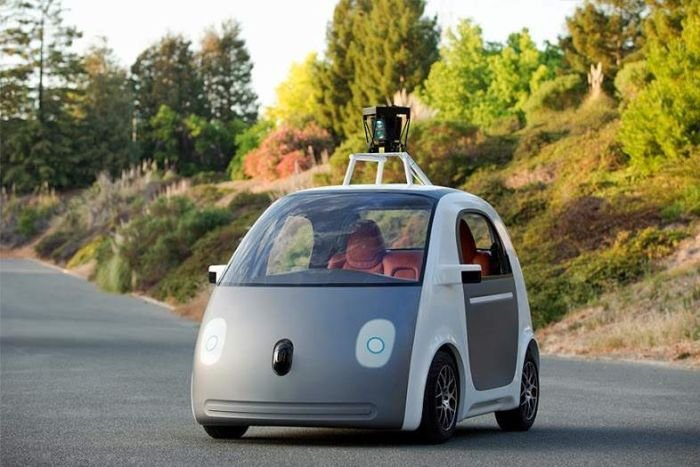Technology Disruptors: What Business Leaders Notice... and Miss
The top 8 easy-to-see technologies
Our recent survey of over 280 Australian business leaders produced some rich insights on a range of issues confronting organisations as they prepare (or fail to prepare) to leverage disruption.
For instance, we asked survey respondents to rate a range of known technologies in terms of the impact they expect these disruptors to have on their organizations in the next five years. 70% of our respondents rated the effects of 8 out of the 20 listed technologies as having a high impact.
Interestingly, this top 8 mainly includes technologies (e.g., mobile, data analytics, social media) that are established game-changers, with effects that are already transforming business models. These top 8 represent the current industry standard for technological capabilities — if a business is not already leveraging these, it has a higher risk of being disrupted.
It's worth noting that we asked survey respondents to look forward and consider how powerfully the range of technologies listed would impact them in the coming 5 years.
The 8 missing in action
The bottom 8 — the ones our respondents rated the lowest for their potential to create an impact in the next five years — included technologies like artificial intelligence, autonomous vehicles, 3D printing, IOT, nanotechnology, and robotics. These are technologies with massive commercial applications and implications, and ones that have a high probability to wreak havoc on conventional business models.
This left us asking ourselves: “does ‘digital disruption' get all the press?” And “does the low ranking of the physical technologies mean they don’t count?” Is that why the leaders we surveyed were moderately to strongly engaged with digital technologies, but relatively ignorant when it came to emerging disruptors like autonomous vehicles and artificial intelligence?
A word of warning!
“Given the pace of autonomous car research, many in the space believe driverless cars will be ready for consumers within the next three to four years”. Sydney Morning Herald 22nd July 2016
PHOTO: Google was one of the first companies to develop driverless cars.
VIDEO: The decline of Kodak “The name Kodak was once synonymous with cameras and film. They were innovators in the industry and the leaders of it for 100 years. Yet a few years ago they experienced such a decline that they were forced into bankruptcy.”
The survey also spelled out the strategic difference between digital and physical technologies. We know that playing catch-up in fast-moving digitally-disrupted markets is hard enough. But in environments where existing physical capability and assets are disrupted by new physical technologies (leaving those existing physical elements to become stranded assets), a whole order of magnitude in investment above digital becomes necessary. Just look at the damage already done to the Taxi industry by Uber, and to the mobile phone industry — originally by Apple and Samsung, and now those empires are under threat by Huawei, ZTE, Xiaomi and Lenovo.
And take a look at the rapid automation and electrification of motor vehicles by the big auto makers and Tesla, with both Tesla and Uber along with Wikispeed and Local Motors bringing completely different business models for access and ownership of vehicles. What will the flow on disruption be to services that are supplementary to the auto and transport sectors, like vehicle sales, leasing and insurance, auto repair and accessories, delivery services, public transport, parking, energy and public transport infrastructure? (Not to mention the impact on current Uber drivers).
The results of the survey, which included a high number of responses acknowledging that respondents simply know too little about the technologies listed, were revealing. Ultimately, many of the leaders we surveyed are not sufficiently tech-savvy to leverage emerging technologies in a timely manner. They demonstrated a tendency to believe established game-changers were actually emerging disruptors, failing to realize how rapidly the horizon of change is approaching them.
Leveraging tech’s exponential power
Our survey results reinforced something that we have observed many times in our analysis and coaching work: the capability to understand and leverage exponential change is too rare among leaders.
What do we mean by this? It’s simple: if you invest at an early stage into something that is growing exponentially (read: at a steady rate with compounding effects), you will benefit when it reaches the sharp spike in its trajectory. But if you ignore that development until the spike appears (think about the moment everybody suddenly had an iPhone as a “spike” in the mobile-tech trajectory), you risk being disrupted. At that stage, you have to invest heavily just to catch up.
What does a failure to leverage technology’s (long-documented) exponential power look like?
Investing too heavily into a single technology (e.g., fixating on digital)
Confusing established for emerging technologies (e.g. waiting for your existing suppliers to bring new technologies to your attention as an established product or service)
Failing to invest time and energy into identifying disruptive technologies on the horizon (e.g. innovation partnerships, workshops and labs, and rapid prototyping)
What would the successful leveraging of technology’s exponential power look like?
Engaging with emergent trends by observing and learning (e.g., consulting more regularly with your IT staff and non-vendor, independent advisors)
Making smaller strategic investments into a number of emerging technologies — to avoid over-investment into a single technology and to harness the power of an exponential spike
Ultimately, making small investments into emerging technologies is all part of leveraging disruption’s tailwind and avoiding its merciless headwind. Leaders who know it’s never too late to learn will be the biggest winners in this age of disruptions that rapidly ramp up from concept to economic and social game-changers.
In fact, some of those leaders were among our 280 survey respondents. Those leaders knew about the 20 technologies we listed — but they also identified 10 additional technologies that they were working on.
Are you one of the leaders? We'd like to hear more about how your strategy embraces disruption.

